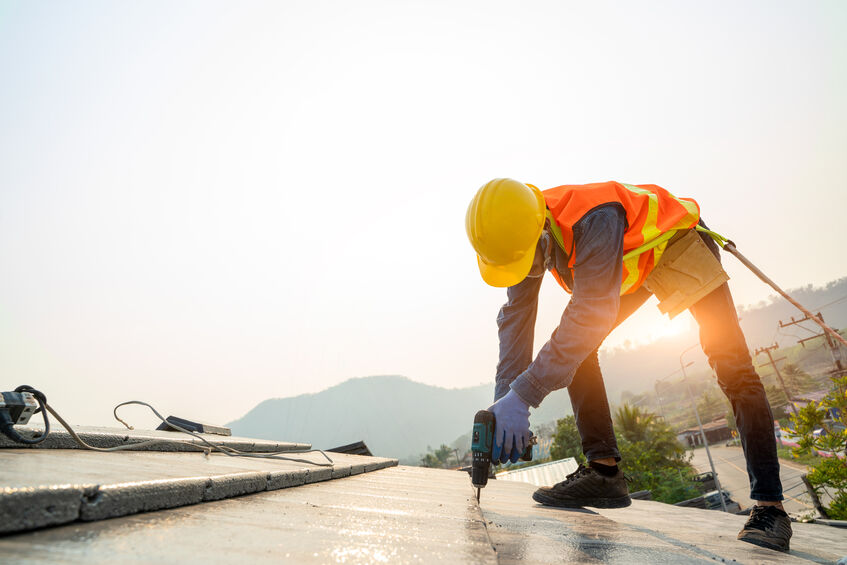Innovations in roofing materials for long-lasting durability
 Roofing is a critical component of any building, protecting it from the elements and ensuring its longevity. Over the years, we here at McNeil Engineering and the roofing industry as a whole have witnessed significant advancements in materials and technologies, leading to the development of innovative solutions that offer exceptional durability. In this blog post, we will explore some of the latest innovations in roofing materials that are revolutionizing the industry and providing long-lasting protection for residential and commercial structures.
Roofing is a critical component of any building, protecting it from the elements and ensuring its longevity. Over the years, we here at McNeil Engineering and the roofing industry as a whole have witnessed significant advancements in materials and technologies, leading to the development of innovative solutions that offer exceptional durability. In this blog post, we will explore some of the latest innovations in roofing materials that are revolutionizing the industry and providing long-lasting protection for residential and commercial structures.
Impact-resistant shingles
Traditional asphalt shingles have long been a popular choice for roofing due to their affordability and ease of installation. However, advancements in technology have led to the development of impact-resistant shingles, which provide enhanced durability against severe weather conditions. These shingles are manufactured using robust materials that can withstand hail, wind, and even falling debris. By investing in impact-resistant shingles, homeowners and building owners can enjoy greater peace of mind knowing that their roofs are better equipped to withstand the forces of nature.
Cool roofing
As energy efficiency becomes a top priority in construction, cool roofing has gained prominence. Cool roofing materials are designed to reflect sunlight and absorb less heat, reducing the heat transfer to the building’s interior. This helps to lower cooling costs, increase comfort, and reduce the urban heat island effect. Various types of cool roofing materials are available, including cool roof coatings, reflective tiles, and metal roofs with reflective coatings. These innovative materials can significantly reduce the energy consumption of a building and contribute to a more sustainable future.
Solar roofing
The increasing demand for renewable energy has led to the rise of solar roofing systems. Solar panels integrated into roofing materials allow buildings to generate electricity from the sun’s energy. These systems are not only environmentally friendly but also offer long-term cost savings by reducing reliance on traditional energy sources. Solar roofing solutions come in various forms, such as solar shingles, solar tiles, and solar panels integrated with metal roofs. By harnessing the power of the sun, buildings can become more energy-independent while maintaining the aesthetic appeal of their roofing.
Green roofing
Green roofing is an innovative approach that combines vegetation with roofing systems. It involves the installation of living plants and vegetation layers on the roof, providing numerous environmental benefits. Green roofs help to improve air quality, reduce stormwater runoff, provide insulation, and mitigate the urban heat island effect. Additionally, they can extend the lifespan of the roof by protecting it from extreme temperature fluctuations and ultraviolet (UV) radiation. With advances in green roofing technology, such as lightweight and modular systems, it has become easier to incorporate green roofs into both new and existing buildings.
Metal roofing
Metal roofing has gained popularity due to its exceptional durability and longevity. Advances in metal roofing technology have resulted in improved corrosion resistance and enhanced protective coatings, making them highly resistant to weather elements. Metal roofs are known for their strength, fire resistance, and ability to withstand high winds. They also offer excellent energy efficiency by reflecting solar heat, reducing cooling costs in warm climates. Additionally, metal roofs are recyclable and contribute to sustainable building practices.
Synthetic roofing materials
Synthetic roofing materials, such as synthetic slate and synthetic cedar shakes, have emerged as alternatives to traditional roofing materials like natural slate and wood. These synthetic options mimic the appearance of natural materials while offering superior durability and resistance to weathering. Synthetic roofing materials are lighter in weight, making them easier to install and reducing the structural load on the building. They are also more cost-effective and require less maintenance compared to their natural counterparts.
Roof coatings and sealants
Roof coatings and sealants play a crucial role in extending the lifespan of roofing systems. Innovations in coating technologies have led to the development of highly protective and reflective coatings that can be applied to various types of roofs. These coatings provide an additional layer of protection against UV radiation, moisture, and thermal expansion. They help to minimize roof degradation, prevent leaks and reduce energy consumption by reflecting sunlight and heat. Roof coatings and sealants also offer the advantage of easy application and can be used for both new and existing roofs.
Innovations in roofing materials have transformed the industry, offering improved durability, energy efficiency, and sustainability. Impact-resistant shingles, cool roofing, solar roofing, and green roofing are just a few examples of the innovative solutions available today. As the demand for long-lasting and environmentally conscious roofing options grows, it is crucial for homeowners, building owners, and roofing professionals to stay informed about these advancements. By embracing these innovations, we can create more resilient structures, reduce our environmental footprint, and ensure that roofs provide lasting protection for years to come.
We hope you’ll contact us at McNeil Engineering if you ever need assistance on a roofing project or a consultation. You can also check out some of our previous roofing and paving consulting projects here.

